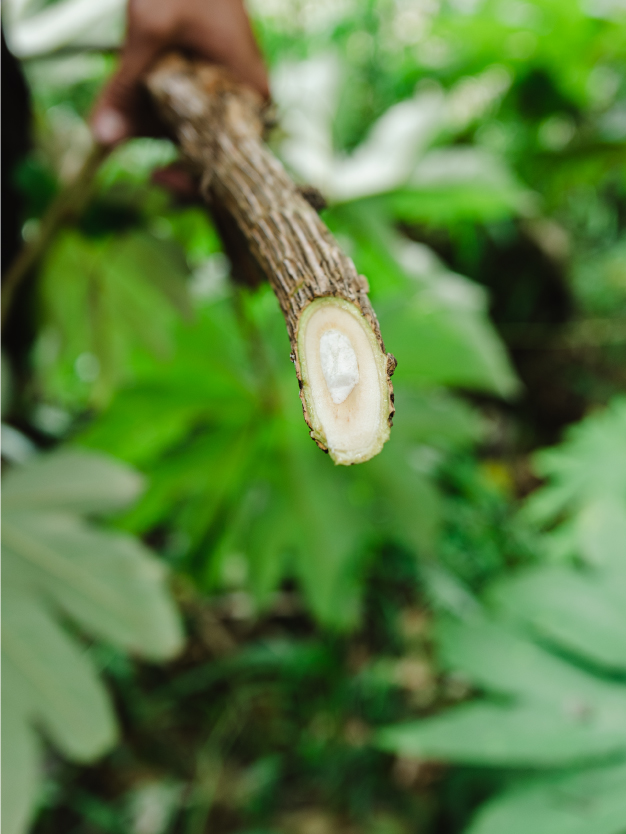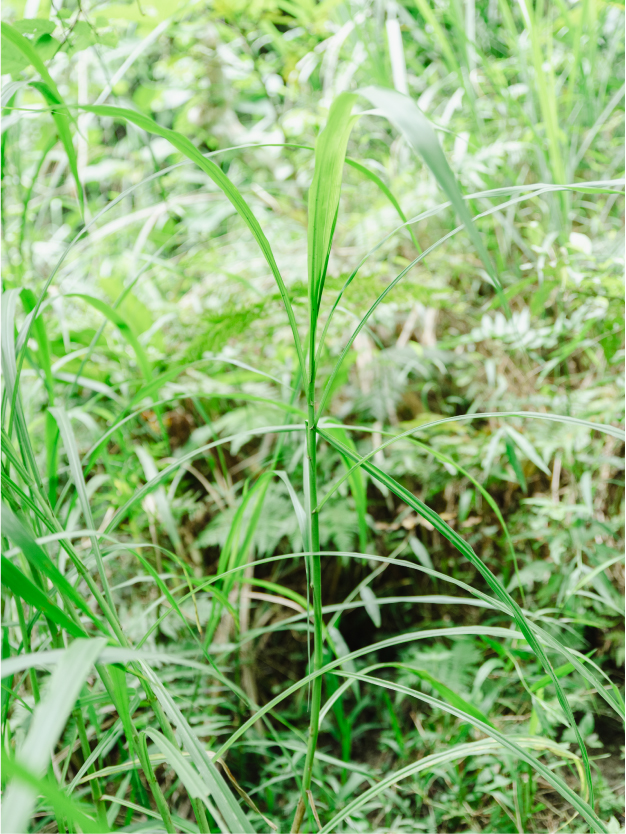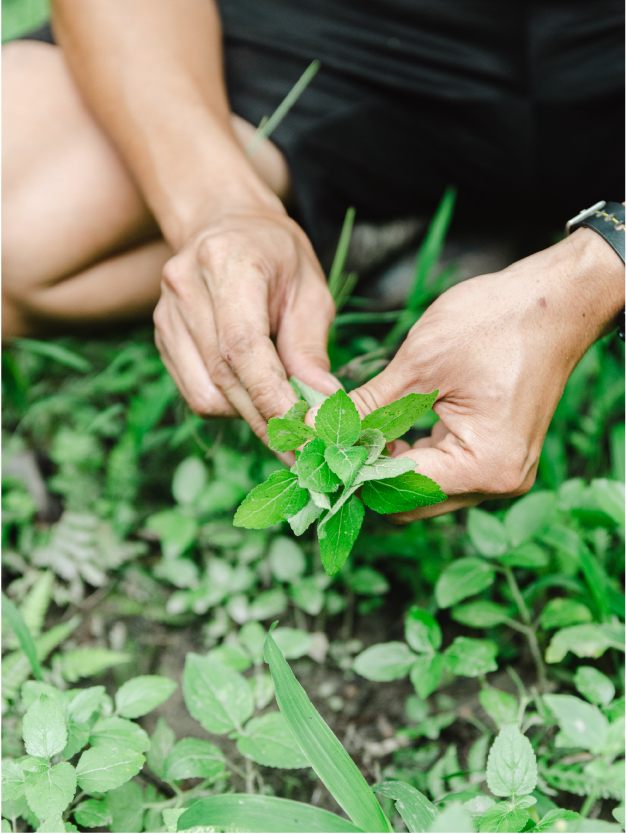
It is human nature for people to work with convenient tools. But while in the wilderness, it would be beneficial in helping you stay calm in face of danger if you are equipped with some useful survival skills. The first lesson Akac Orat gave Kuo was how to make chopsticks with a pocket knife. Then he brought her to Mount Madawdaw, the highest peak of the Coastal Range, to learn about the forests and gather the Yellow Rotang Palm. The aim was to familiarize Kuo with the traditional indigenous culture through hands-on experience.
Making Eating Utensils with Bamboo
Traditionally the Amis people do not use modern tools such as saws to fell bamboo although they are handy for the purpose. The reason is that the sawdust would jam the pores of bamboo plants, which results in the death of the forests. Akac Orat also reminds us to make sure there were no snakes hidden under the leaves before moving the felled bamboo because you do not want it, if any, to fall onto your head.

The rattan palm is part and parcel of the Amis people’s lives. It is used for a wide range of purposes such as building houses, making baskets, and cooking as an ingredient. The dishes made with dongec (the Yellow Rotang Palm’s stem), in particular, are a must-have for traditional rituals and festive events. But it’s far from easy to gather the plant in the wild. Let’s take a trip to the mountains and learn about some other plants along the way.

The white pith of the rice-paper plant’s stem can be said to be natural Styrofoam, which is exceptionally light in weight. It is pliable when soaked with water but hardens when dried, and therefore serves as a perfect filler for the bamboo beams and posts of houses to prevent rainwater and honey from penetrating. The pith can also be used to patch the holes of bamboo rafts to increase buoyancy.

Some commonly seen members of the grass family like Miscanthus, Chinese Pennisetum, Silver Grass, or Wild Sugarcane, are suitable for making chopsticks or barbecue grills. When there is limited access to edible wild plants in the wilderness, the Amis people tend to cook with the stems of gramineous plants, whose bitter taste is believed to be able to help reduce body heat; while cooked in combination with protein, they can add a sweet and refreshing flavor to the dish.
Drinking water from a river is risky because it might introduce parasites into the body. In cases like this, one can eat Ginger Lilies to prevent infection and expel toxins. But the Amis people usually do not drink river water when they need to replenish the body’s fluids. Instead, they do so by eating gramineous plants.

Tropic Ageratum, also known as floss flower, is a medicinal plant commonly used for first aid in the wilderness. When getting injured, rub the leaves and apply them to the wound to reduce inflammation, stop bleeding, and prevent bacterial infection. Finally, wrap the wound with leaves of such plants as Formosan Palm or Railway Beggarticks.
Gathering dongec
When gathering Yellow Rotang Palm for their dongec as an ingredient in cooking, you have to cut the stems off at the sixth leaf from the end so that the plants may keep growing. But there is no gain without pain. The cut-off rattan stems are hard to remove since they tend to be tangled with trees and weeds. You must have a “tug of war” with these stubborn wild plants by removing the thickly entangled leaves and branches before bringing them home. After pulling them down, you have to peel off the skin of the rattan vines covered with sharp thorns to prevent getting hurt.





